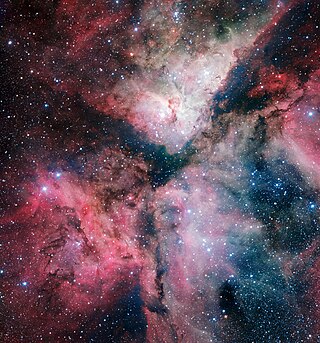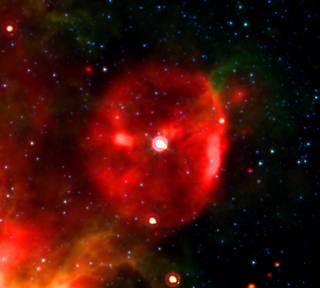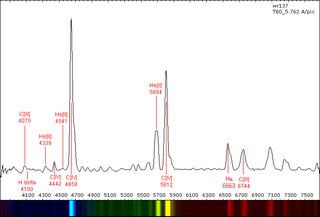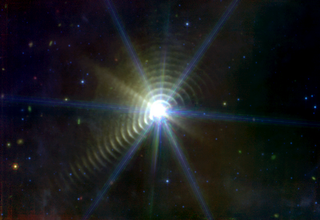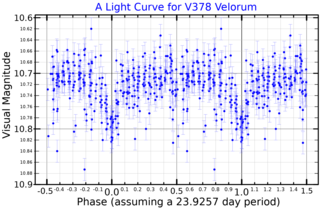| Observation data Epoch J2000.0 Equinox J2000.0 | |
|---|---|
| Constellation | Cygnus |
| Right ascension | 20h 05m 57.32445s [2] |
| Declination | +35° 47′ 18.1508″ [2] |
| Apparent magnitude (V) | 6.75 - 6.84 [3] |
| Characteristics | |
| Spectral type | WN5o + O9I [4] |
| Apparent magnitude (J) | 6.319 [5] |
| Apparent magnitude (K) | 6.247 [5] |
| U−B color index | −0.77 [6] |
| B−V color index | +0.13 [6] |
| Variable type | WR [3] |
| Astrometry | |
| Proper motion (μ) | RA: −3.175 [2] mas/yr Dec.: −6.537 [2] mas/yr |
| Parallax (π) | 0.5380 ± 0.0223 mas [2] |
| Distance | 6,100 ± 300 ly (1,860 ± 80 pc) |
| Absolute magnitude (MV) | −3.4 / −5.4 [7] |
| Orbit [4] | |
| Period (P) | 112.736±0.073 days |
| Semi-major axis (a) | 0.7791±0.0024″ |
| Eccentricity (e) | 0.3646±0.0103 |
| Inclination (i) | 162.08±1.74° |
| Semi-amplitude (K1) (primary) | 13.41±2.34 km/s |
| Semi-amplitude (K2) (secondary) | 32.56±3.98 km/s |
| Details [4] | |
| WR | |
| Mass | 9.3±1.6 M☉ |
| Radius | 3.4±0.5 R☉ |
| Luminosity | 263,000+68,000 −54,000 L☉ |
| Temperature | 71,000±5,000 K |
| O | |
| Mass | 22.6±3.2 M☉ |
| Radius | 16.6±1.0 R☉ |
| Luminosity | 195,000+50,000 −40,000 L☉ |
| Surface gravity (log g) | 3.30±0.15 cgs |
| Temperature | 30,000±1,000 K |
| Rotational velocity (v sin i) | 96±10 km/s |
| Other designations | |
| Database references | |
| SIMBAD | data |
WR 133 is a visually moderately bright Wolf-Rayet star. It is a spectroscopic binary system containing a Wolf-Rayet primary and a class O supergiant secondary. It is in the constellation of Cygnus, lying in the sky at the centre of the triangle formed by β and γ Cygni, near η Cygni. It is the brightest member of the sparse open cluster NGC 6871.
WR 133 is one of the brightest Wolf Rayet (WR) stars in the northern hemisphere, slightly brighter than WR 140 which also in Cygnus. [8] The WR star is typically identified as the primary, being more luminous, and dominating the spectrum. However, the supergiant secondary is more massive and visually brighter. The primary star is a WN5 nitrogen-rich WR star and the secondary has a spectral type of O9I. The orbit is moderately eccentric and has a period of 113 d, which has been determined from the velocity variations observed with the component's spectral lines, mostly from the HeII emission lines at 541.1 nm for the WR primary, and helium and oxygen absorption lines for the primary. This is the first WN-type WR star to have its mass dynamically determined from orbital motion, although the precision is hampered by the nearly face-on orientation of the orbit. [4]
WR 133 is listed as a Wolf-Rayet variable star and has been given the variable star designation V1676 Cyg in the General Catalogue of Variable Stars. Its visual magnitude varies between 6.75 and 6.84. [3]




